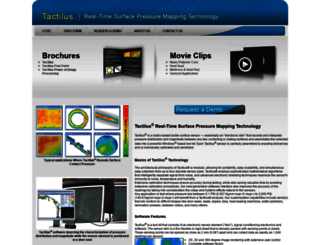Tactile Surface Sensor | Real-time Surface Pressure Mapping Technology | Pressure Pad | Force Sensitive Resistor | Matrix Tactile Sensor | Pressure Ma...
Page Load Speed
2.1 sec in total
First Response
166 ms
Resources Loaded
1.8 sec
Page Rendered
123 ms

About Website
Visit tactilus.net now to see the best up-to-date Tactilus content and also check out these interesting facts you probably never knew about tactilus.net
The Tactilus matrix based pressure mapping system uses an electronic sensor element to indicate surface pressure distribution and magnitude between two contacting surfaces
Visit tactilus.netKey Findings
We analyzed Tactilus.net page load time and found that the first response time was 166 ms and then it took 1.9 sec to load all DOM resources and completely render a web page. This is quite a good result, as only 35% of websites can load faster.